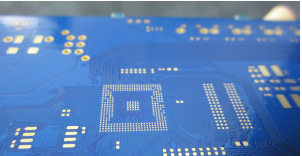As the world shifts to 5G, mini 5G base stations are installed every 100 meters in urban areas and installed on buildings, walls, roofs, traffic lights and other facilities, in sharp contrast with the 4G LTE, which is several kilometers away from large antenna towers. These 28 GHz broadband base stations require PCBs made of new materials, such as fast laminates with low dielectric constant (Dk, contrast) to increase wave speed and reduce transmission loss by up to 30%. 5G millimeter wave requires impedance control as low as ±5%, requires highly accurate PCB circuit size, and requires PCB internal circuit measurement on all panels.
In this case, the production line should include advanced DI for circuit patterns and solder mask, and AOI for integrated 2D measurement of complex, high-level digital boards.
5G server design
To achieve 5G communications, local and central servers need to be combined. This includes very large-scale data servers that will create, process, store, and transmit massive amounts of data with the lowest possible latency. The attached edge computing function processes real-time data created by sensors or users at the edge of the network (device level), rather than in the cloud. Running these servers and processes requires high-level PCBs, usually 12 to 22 layers, and high-performance data servers up to 30 layers. The transmission line needs strict impedance control to handle the high frequency of 5G.

In order to support the high processing computing (HPC) unit, the IC carrier board needs to adopt a new design with an area up to 110mm*110mm to support larger chips and finer lines/pitch as low as 5/5μm.
In order to achieve excellent defect detection, 5G servers require high depth of field (DoF) for both DI and AOI in the manufacturing process. AOI with integrated 2D measurement and inspection is also crucial for strict impedance control. The 5G server board also needs DI to achieve high-precision alignment of the upper and lower layers and strict impedance control, as well as solder-resistant DI for large boards. AOI will ensure that the requirements for fully automated and high-capacity MLB are met. Finally, the automated optical forming and repairing system is conducive to low-damage forming of shorts and open circuits on the PCB.
5G smartphone
The latest and next-generation 5G smartphones rely on mSAP/SLP, which uses extremely thin connection devices to efficiently transmit signals and power to connected components while reducing power consumption. Flexible and rigid-flex combined PCB is another requirement for smaller, lighter and more functional devices. Increasingly complex multiple-input multiple-output (MIMO) antennas are deployed in 5G smartphones that use packaged antennas (AiP) to help achieve powerful functions.
Both mSAP/SLP and flexible PCB require laser hole detection in the AOI system to ensure the required quality and accurate positioning of the connection device. The advanced DI system can ensure the precise and fine line patterning of the mSAP/SLP board, the high depth of field (DoF) of the flexible and rigid-flex board, and provide high productivity to increase production. Finally, automatic optical shaping and repairing can shape various defects found in the inspection process, thereby greatly reducing the number of scrap boards.
in conclusion
With the help of advanced manufacturing technology,PCB designers can build 5G infrastructure and equipment as needed to support new communication protocols and requirements. If appropriate manufacturing systems are used, such as direct laser imaging, automatic optical inspection, and automatic optical shaping and repairing, designers will no longer need to worry about low latency, high frequency, and complex and fragile materials. These technologies can be used not only to design and manufacture 5G components, but also to improve yields in mass production environments, which are critical to the deployment and use of 5G